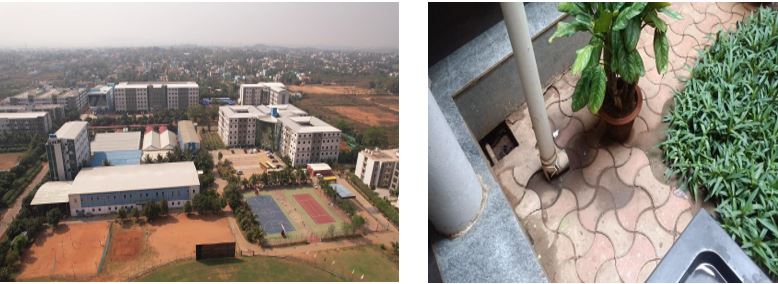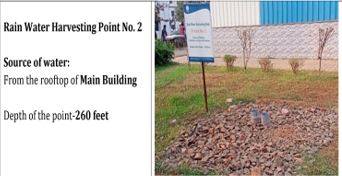Happenings
Energy Conservation Initiatives
Centurion University has undertaken significant initiatives to upgrade its existing buildings and infrastructure towards higher energy efficiency. Recognizing the pressing need for sustainable practices, the university has implemented a range of energy conservation measures and embraced renewable energy sources to reduce its carbon footprint and promote environmental responsibility.
Sensor-based Automatic Solar Streetlights
Centurion University has installed sensor based automatic solar streetlights in order to conserve energy. These sensors detect movement within a specified range and activate the street lights when motion is detected, conserving energy when no activity is present. Light sensors, also known as dusk-to-dawn sensors, automatically adjust the brightness of the lights based on ambient light conditions. They ensure the lights are at their brightest during low light periods, such as nighttime. There are about 531 such street lights installed in all its three campuses. The light glows bright from dusk to 12 AM and its lux goes down by half from 12 AM to dawn. Each street light installation area occupies 0.5 m2 of land.
| Annual Electricity Consumption | 12417 |
| Annual Diesel Consumption | 4256 |
| Total Annual Conventional Energy Consumption | 16673 |
| Total Annual Solar Energy Consumption | 2336 |
| Total Annual Wind Energy Consumption | 15 |
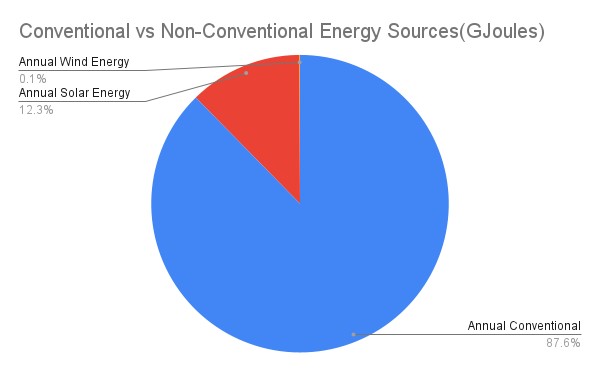
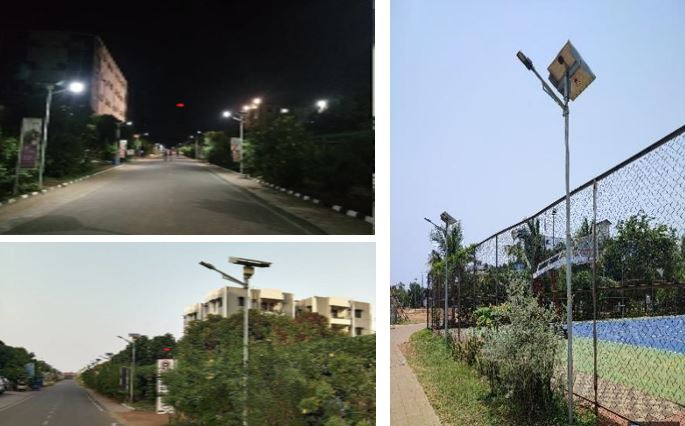
Automated Water Pumping System
The students of Centurion University have designed a prototype automated water pumping system to manage water resources efficiently. These systems automatically shut off the pumps when the water reaches the optimal level in the tanks, ensuring consistent and reliable water access while conserving energy. Solar water pumping solution is a fully automatic system designed to provide water at affordable cost for people with limited or no access to electricity . It uses the most advanced solar variable speed drive to regulate the speed of a 3- phase AC motor depending upon the solar energy available from the solar panel . An array of solar panels are connected in series and parallel generates the power and voltage required for the solar drive to drive the motor. The DC to AC frequency converter in the solar drive converts the DC voltage input to the drive to variable 3 phase AC voltage and frequency. The MPPT algorithm of solar drive extracts maximum power available from the solar panels during the day and operates the motor at variable speed based on the power operates depending upon the motor speed, hydraulic system and the power available from the solar panel. As the sunshine varies during the day, power input to the drive varies and the solar drive generates variable V/F ratio thus controlling the speed of the motor, which in turn regulates the pump impeller speed.

Transition to LED Lighting
The university has replaced traditional lighting fixtures with energy-efficient LED bulbs. This transition reduces energy consumption and extends the lighting systems’ lifespan, contributing to long-term sustainability. The University has developed its own LED bulb which is being installed in every room of the campus. This LED has been made with low power consumption, affordable price and a long life span with its own technology having an SMPS circuit. By replacing the old fluorescent lamp with LED tubes, each tube saves around 22W per fitting. The Bhubaneswar campus has 4128 (approx.) LED bulbs and tubes, Paralakhemundi has 6500 LED fittings, and Rayagada and Bolangir have 160 and 402 light fittings. All these LED fittings were replaced in the period of the last five years. Annual energy saved by using LED is 851180 KWH
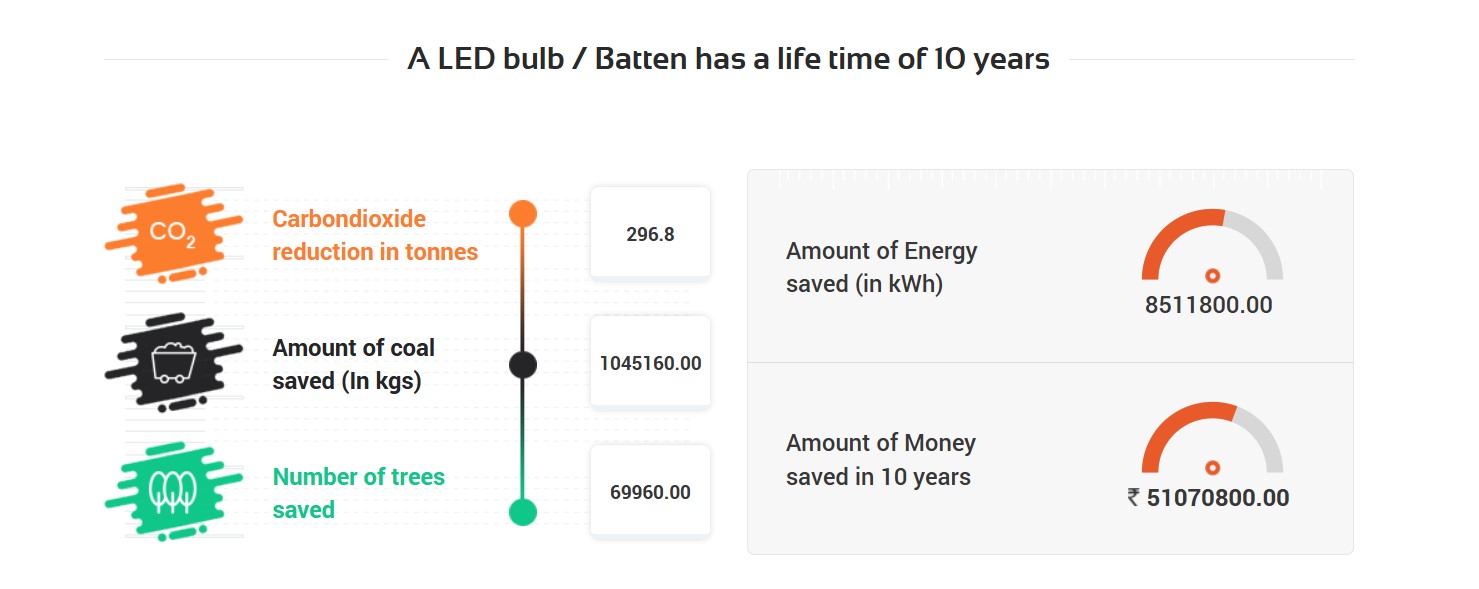
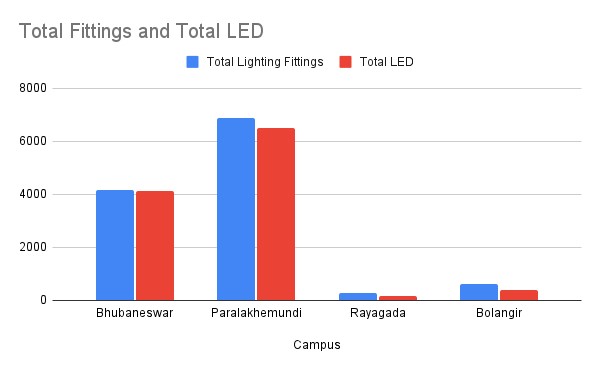
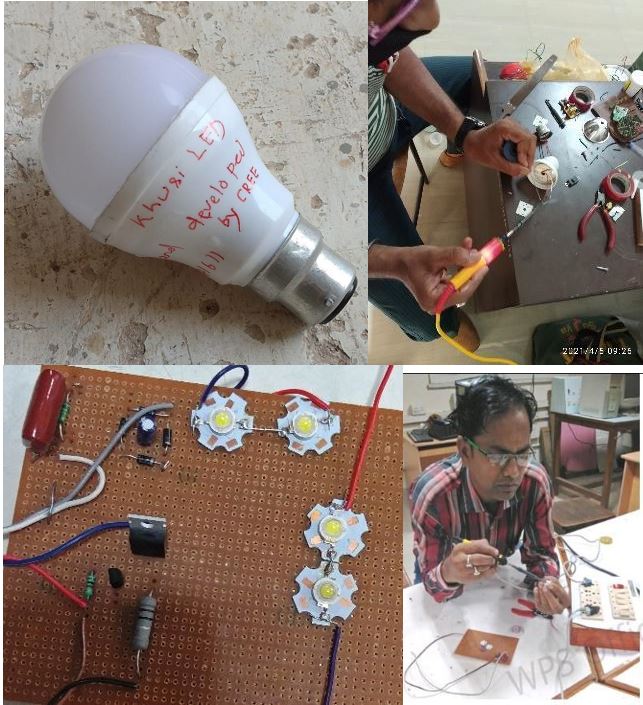
Centurion University Partners with SURE Power Technologies
In a significant stride towards sustainability and clean energy, Centurion University has inked a Memorandum of Understanding (MoU) with Sure Power Technologies, a leading name in renewable energy solutions. This collaborative effort is to install a 500 kW DC Solar Power Plant. SURE has agreed to sell the entire electricity generated from 500 kW DC Solar Power Plant and the purchaser agreed to purchase the entire electricity generated from the project on a monthly basis. The availability of electricity from the contracted capacity is estimated to be 7,45,000kVAh in the first year at the delivery point. The tariff for the electricity generated will be Rs. 5.40/- per kVAh.
Centurion University Partners with SOUTHCO Utility
Centurion University has signed a Memorandum of Understanding (MoU) with SOUTHCO Utility, a prominent electricity distribution company. This partnership focuses on net metering and bi-directional metering for a Rooftop Solar PV Project. Net metering is at the heart of this project. It allows surplus solar power generated by the university’s rooftop panels to be fed back into the grid, earning energy credits. This not only results in significant cost savings but also promotes a responsible approach to energy consumption. Bi-directional metering takes the sustainability agenda a step further. It allows for precise monitoring of both energy imports from the grid and the export of excess solar power. This level of monitoring ensures that the university maximizes its use of clean energy while minimizing reliance on conventional power sources.
Centurion University Partners with CESU
Centurion University has established a 150 kW solar power plant on its premises, the university is demonstrating its unwavering commitment to clean energy and environmental responsibility. Furthermore, an MoU with the Central Electricity Supply Utility (CESU) paves the way for net metering and bi-directional metering of this innovative rooftop solar PV plant.
Solar Power Plants – Micro-Grids

Centurion University has installed a 2x 16.25 kWp solar microgrid system marking a significant step towards harnessing renewable energy. The output of this system is connected to a Centurion market complex, resulting in shops running on renewable energy. On an average in summer, this system generates power of 100-110 units per day, saving electricity around 95-100% by this hybrid system. It is around 10% of total conventional energy sources.
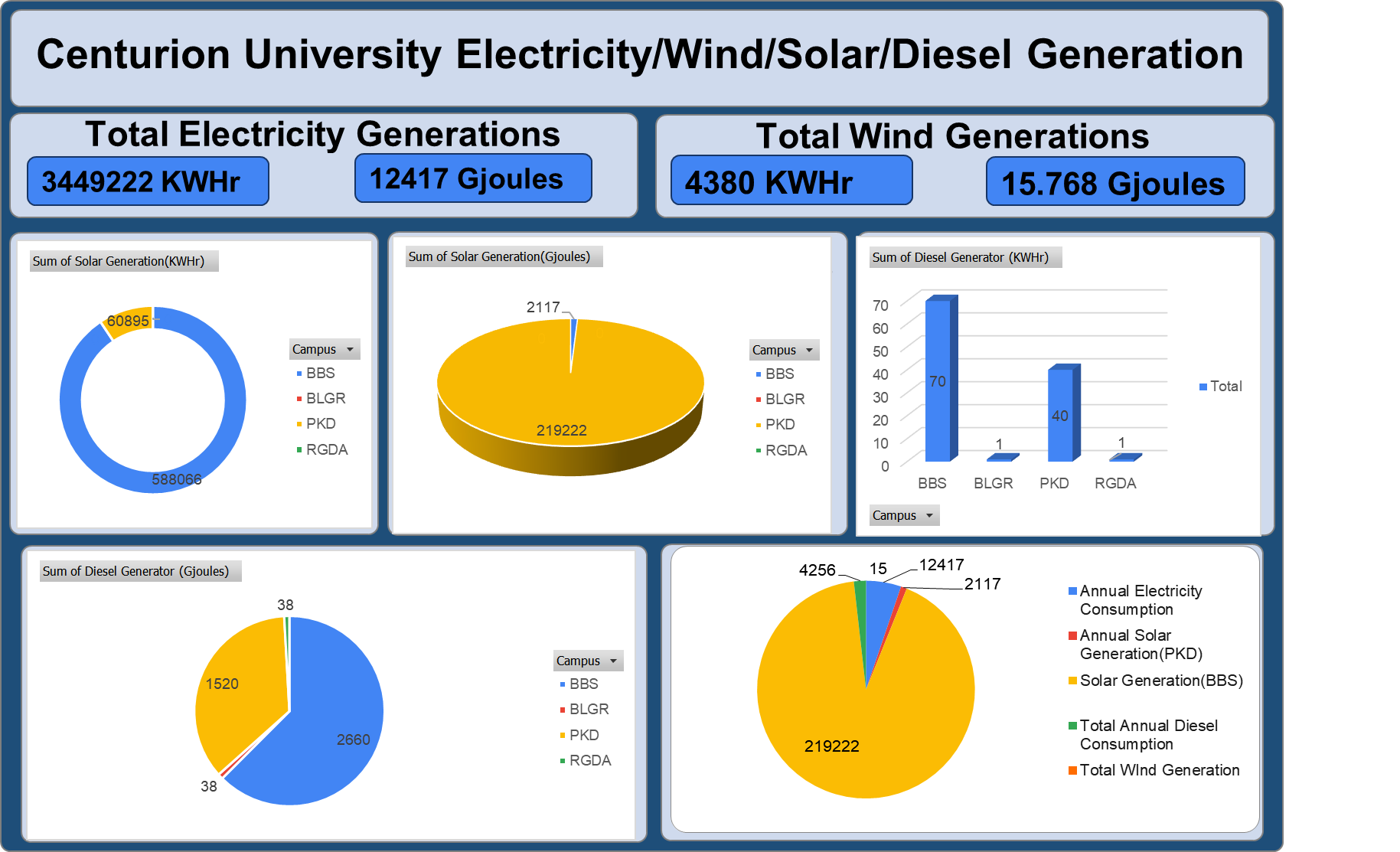
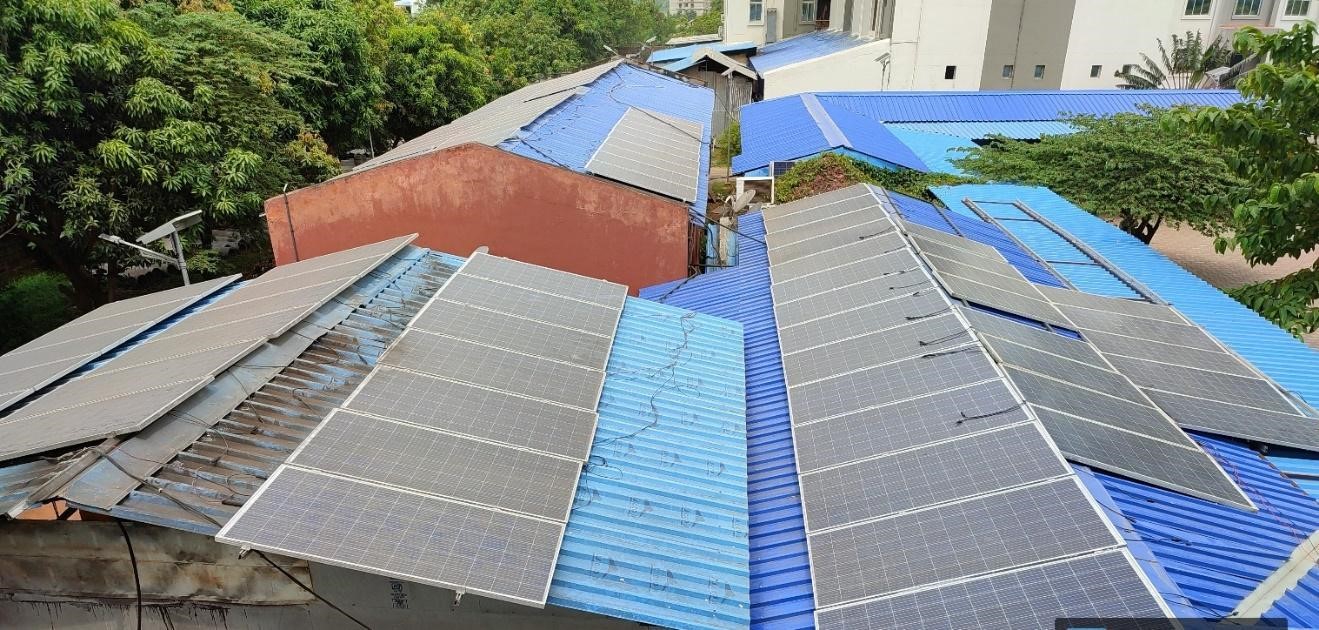
Rain Water Harvesting System
The University has been installing a slanted tin rooftop to facilitate effective rainwater harvesting by directing rainwater into gutters and storage tanks. This collected water is used for irrigation, flushing toilets, and drinking after treatment. It conserves water, reduces groundwater and municipal supply dependency, and helps mitigate urban flooding. The Bhubaneswar campus, receiving 1500 mm of annual rainfall, saves around 75 million liters of rainwater annually with a 50,000 sq. mt. harvesting system, promoting sustainable water management.
